Every Tea lover wants to pick a good pot, but with the variety of Yixing clay pot shapes and rich styles, how do you select a premium pot?
We suggest considering the following five aspects. This is pure valuable information, so remember to save it for later!
Material Aspect
As the saying goes, “No clay, no pot.” Clay material, as the basic component of Yixing clay pots, relates to the overall quality of the pot and the effect of subsequent brewing and maintenance. When buying or playing with a pot, start by looking at the clay. High-quality clay has the characteristics of “not being too bright in color and not too greasy in texture.”
The type of material can be identified based on the color of the body after firing: Purple clay materials generally turn into various shades of purple after firing, such as purplish red, purplish brown, purplish brown, dark purple, etc. Green clay materials have a unique mud color after firing, with a bluish green hue that slightly glows green, clear and unique; with a little brewing, the tone becomes warm and translucent.
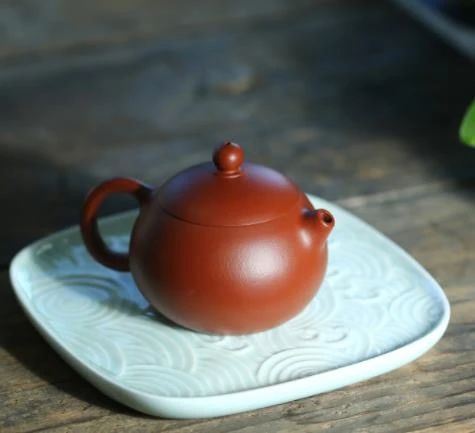
▶Luyitang Zhu Ni Xishi Pot
Red clay materials turn into various shades of red after firing, such as bright red, orange red, dark red, etc. Zhu Ni material, a type of red clay, generally has a higher degree of crystallization after firing, making its color more vivid and bright. Duan Ni materials show especially noticeable sand grain effects after firing, with a clean and elegant color, and combined with engraving, they have a very scholarly charm.
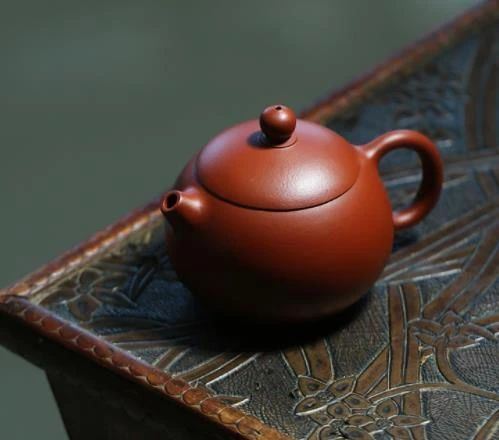
▶Luyitang Zhu Ni Xishi Pot
Practicality Aspect
Yixing clay pots combine practical functions with artistic value. The primary duty of a Yixing clay pot is to Brew tea. When selecting a Yixing clay pot, one should not violate the fundamental principle of practicality. We consider practicality from the following aspects.
The capacity must be appropriate
If there are many friends and much tea is brewed, naturally, a pot with larger capacity should be chosen; if only two or three friends are sipping tea intimately, a pot with smaller capacity should be selected.
The center of gravity must be stable and comfortable to hold
This means it should meet ergonomic requirements. Some Teapots are quite heavy when held, which may be due to improper handle design or thick pot walls.
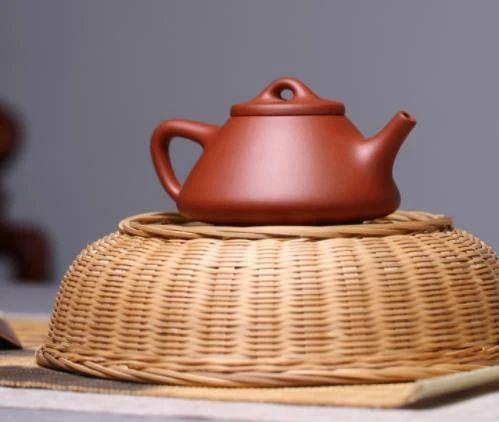
▶Luyitang Ziyi Shibo Pot
The lid design must be reasonable, allowing convenient entry and exit of tea leaves
Some tea leaves are in a dry and compressed state before brewing. After brewing, the leaves expand, potentially filling up the entire pot. If the mouth of the pot is too small or improperly designed, removing the tea residue will require some effort. If overlooked and not cleaned thoroughly, tea scale can form on the inner wall, possibly leading to mold, which can be detrimental to health.
The water flow must be smooth, and the cutoff swift and clean
A good pot produces a strong and forceful water flow, with an arched water column that is round and smooth without scattering. When cutting off the water flow, it stops immediately, cleanly and decisively.
Workmanship Aspect
The vast majority of good Yixing clay pots are handmade, so the level of craftsmanship is an important criterion for evaluating the quality of a Yixing clay pot. We can identify the workmanship requirements of a Yixing clay pot from the following aspects.
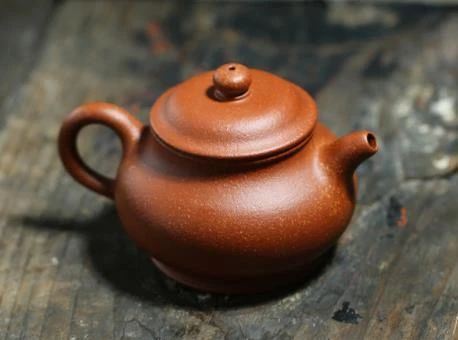
▶Luyitang Jiangpo Pan Pot
The spout, handle, and knob should ideally be aligned in a straight line
This may seem simple, but it is not. Many pots, even those made by famous artists, may have slight misalignment of the spout and handle. It is also common for the top and bottom of the handle not to be in the same vertical line, as handmade pots cannot be as precise as machine-made ones.
The lid must fit tightly, but not too tight
The lid of a round pot should rotate smoothly without any hindrance. The lid of a square pot should fit the seams flat and straight without deformation. In ribbed pots, all surfaces must align perfectly. The density between the lid and the body must fit snugly, opening and closing without hindrance.
The lines and surfaces must be neatly trimmed, the inner walls must be neatly finished, and the signature must be clear and upright
The lines, transitions, and edges of the pot must be beautifully and neatly trimmed. The signature must be appropriately sized, positioned, and engraved to the right depth. The joints, seams, and inner bottom must be neatly finished.

▶Luyitang Qin Quan Pot
Do not rush, choose carefully and slowly
For those new to Yixing clay pots, consider the following two aspects: 1. For geometrically shaped clay pots, they should be round if they are supposed to be round, square if they are supposed to be square, with straight lines where they should be straight and curved lines where they should be curved. The sizes of all components must be proportional to the pot body, harmonious and balanced.
2. For naturally shaped clay pots, they should be realistic if they are supposed to be realistic, and expressive if they are supposed to be expressive. Flower pots often have many attachments, and the whole piece must have a cohesive momentum without any stiffness. Pay attention to whether there are fine cracks at the contact points between the pot body and the attachments to prevent future breakage.
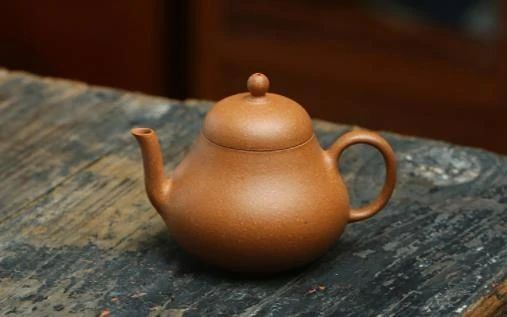
▶Luyitang Siting Pot
Act within your means, with a reasonable price
Distinguish between a widely recognized good pot and a pot that you personally like. What suits you best is the best. Do not follow the crowd and lose the leisurely beauty of savoring tea and cultivating one's character.
When choosing a Yixing clay pot, whether for brewing tea or for collection and investment, you must examine all aspects, look at the clay, the artist, the craftsmanship, and the seal. Careful selection is required to find true and high-quality pieces!
The above is today's sharing. How do you usually select your Yixing clay pot? Don't forget to share in the comments section!
If there are any copyright issues, please contact us to remove them.